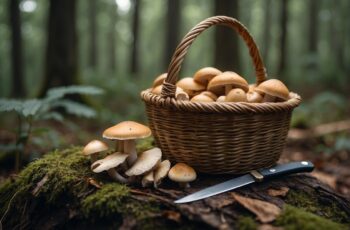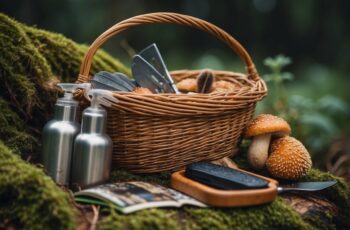The yellow morel, known scientifically as Morchella esculenta, stands out as a prized find for mushroom foragers. Its distinctive honeycombed cap atop a slender, hollow stem is not just a joy to spot in the wild but also a culinary delight. As you wander through the woods in early spring, you might be lucky enough to stumble upon these treasures, especially in areas with a combination of moist soil and dead or decaying hardwood trees.
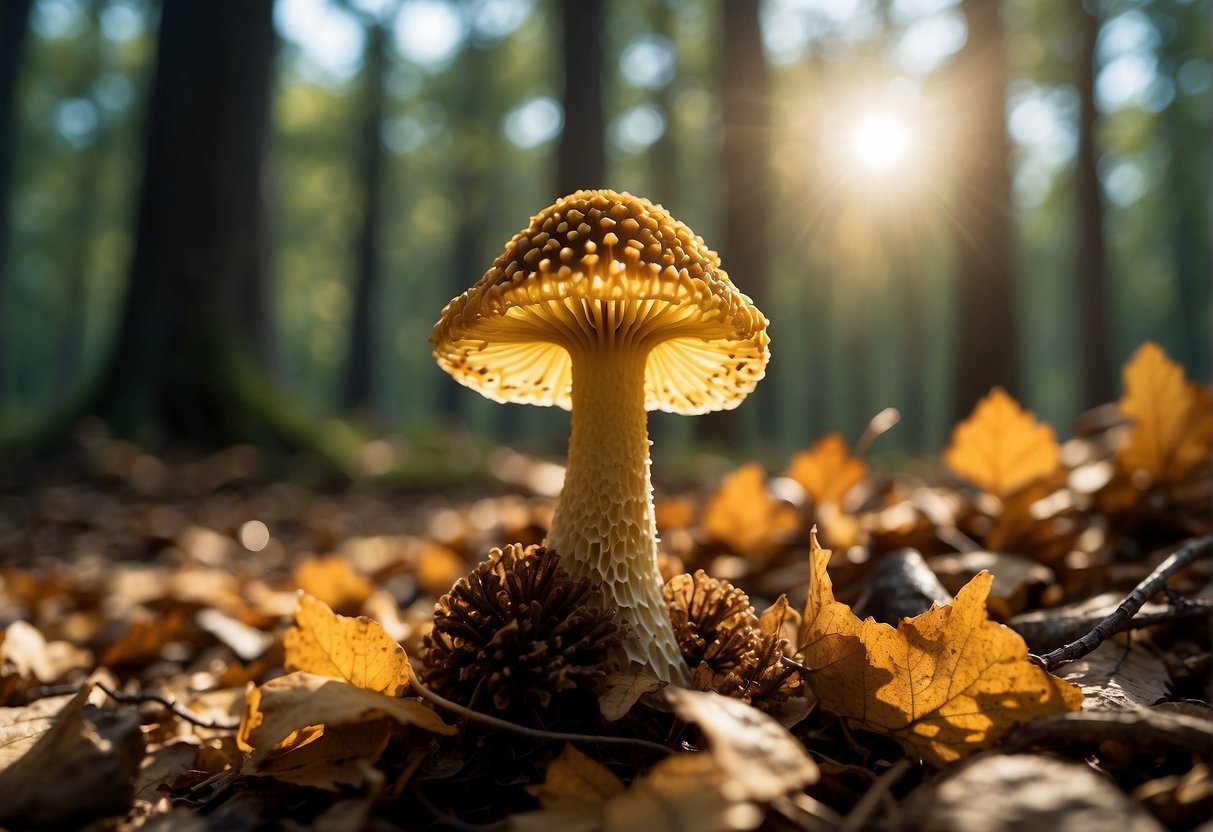
As a foraging enthusiast, your knowledge about the yellow morel is paramount for both conservation purposes and safe consumption. While morels, in general, are highly sought after, the yellow morel possesses a unique charm with its vibrant color and intricate texture. Understanding the habitat and distribution of these fungi ensures you know exactly where and when to look. Your culinary experience is heightened when you harvest your own morels—be prepared for an earthy and nutty flavor that adds sophistication to many dishes.
Key Takeaways
- The yellow morel is a sought-after mushroom by foragers for its distinctive appearance and taste.
- Identifying morels requires a good understanding of their habitat, often found in damp woodland areas.
- Foraging yellow morels not only adds excitement to outdoor adventures but brings a gourmet element to cooking.
Taxonomy and Classification
As you expand your knowledge about the fascinating world of fungi, understanding the taxonomy and classification of the yellow morel is crucial. This section will detail the specific genus, family, and order within which the yellow morel resides.
Morphological Characteristics
Morchella, commonly referred to as the true morel or common morel, showcases unique morphological traits that set it apart within the fungal kingdom. Characterized by its distinct honeycomb-like cap, Morchella is part of the class Pezizomycetes and the order Pezizales. This cap structure is not just for show; it’s crucial for the reproductive process of the fungus, housing the spores necessary for its propagation.
Species Variations
Within Morchella, several species variations are recognized, each with its own specific features:
- Morchella esculenta (Yellow morel): Revered by foragers, identified by its yellow to yellow-gray ridges and completely hollow nature.
- Morchella americana: A close relative often mistaken for the yellow morel, with subtle variances in color and stature.
- Morchella angusticeps: Distinguished by its darker, conical cap and slender appearance.
- Morchella conica: Sometimes considered more challenging to find due to its darker caps blending into the woodland floors.
It’s necessary to distinguish these from the false morel, such as Gyromitra esculenta, which can be toxic. Familiarize yourself with these differences to forage safely and successfully. The family Morchellaceae, under the division Ascomycota, is where you’ll find these true morels, each offering a unique allure to those who understand their value in both cuisine and the ecosystem.
Habitat and Distribution
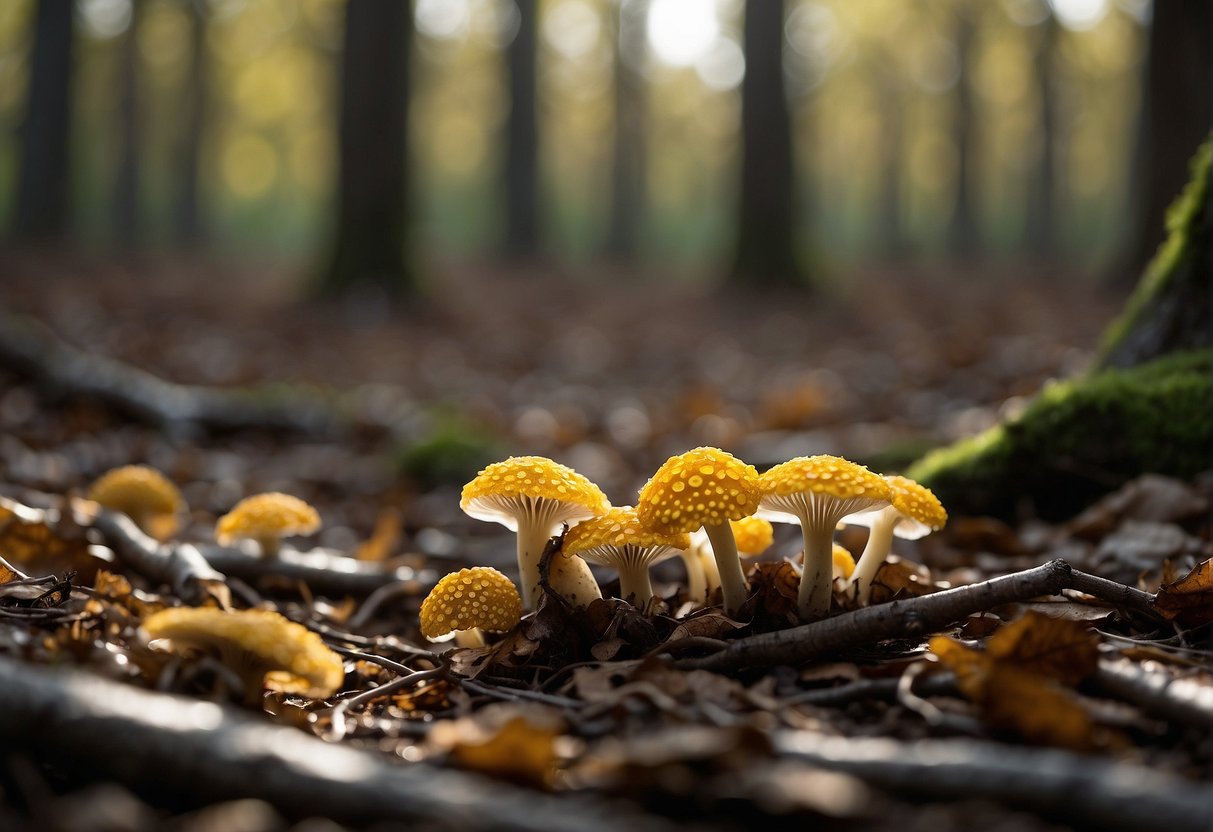
Yellow morels, known scientifically as Morchella esculenta, have specific habitat preferences and a notable geographical footprint. Appreciating their growth conditions and distribution can significantly enhance your foraging experiences.
Favorite Growth Conditions
You’ll find yellow morels thriving in woodlands rich with hardwoods such as ash, elms, and apple trees. They particularly favor areas where the soil is moist but well-drained and has a high lime content. Temperature plays a critical role, too—the emergence of morels coincides with soil temperatures reaching about 50°F in spring.
Interestingly, morels also have a special relationship with forest fires. Areas that have experienced fires the previous year are often hotspots for these elusive fungi, as morels can capitalize on the nutrients released from the burnt organic matter.
Geographical Spread
Geographically, morels have a broad presence. They are widely distributed across North America, favoring states and provinces in the United States and Canada known for their deciduous forests. In Europe, morels are just as widespread, emerging in forests and grasslands across the continent. Keep your eyes peeled for them beneath trees like poplars, where they often establish symbiotic relationships.
Foraging and Culinary Uses
Yellow morels offer a rewarding experience for mushroom enthusiasts with their unique taste and foraging challenges. Whether you’re a seasoned hunter or a curious cook, understanding the nuances of hunting and preparation is crucial for a safe and enjoyable morel season.
Hunting Tips and Safety
When you venture out in spring, typically between May and June, keep your eyes peeled for these prized fungi. Morel mushrooms thrive in moist soil conditions, so search in forests, particularly beneath Elm trees, Ash, Poplar, and dying or sick Elms. Finding morels requires patience and a keen eye; they are often camouflaged by leaf litter.
- Check the temperature: Morel hunting is most successful when the soil is consistently around 50°F and daytime temperatures stay between 60-70°F.
- Observe nature’s cues: Blooms of certain wildflowers can signal the onset of morel season.
Always practice safe foraging; carry a field guide to distinguish edible morels from potential look-alikes. It’s also wise to hunt with a companion and inform others of your foraging location.
Cooking and Preparation
Once you’ve collected your morels, it’s time to turn these edible mushrooms into a culinary delight. Morels have a woodsy flavor that is enhanced when cooked in butter or incorporated into sauces and other dishes. The key to cooking morels is simplicity, allowing their unique taste to shine.
- Clean properly: Rinse collected morels thoroughly to remove dirt and debris. Since they’re hollow, pay extra attention to the inside.
- Cook thoroughly: Morels must be cooked before consumption to avoid any potential toxins. Sautéing in butter until they’re tender is a popular and simple method.
You can enjoy your morel mushrooms in various dishes such as pasta, risottos, or simply on toast. For those with a bountiful harvest, consider dehydrating morels for long-term storage, which preserves their flavor and can be a valuable off-season treat.
Conservation and Ecology
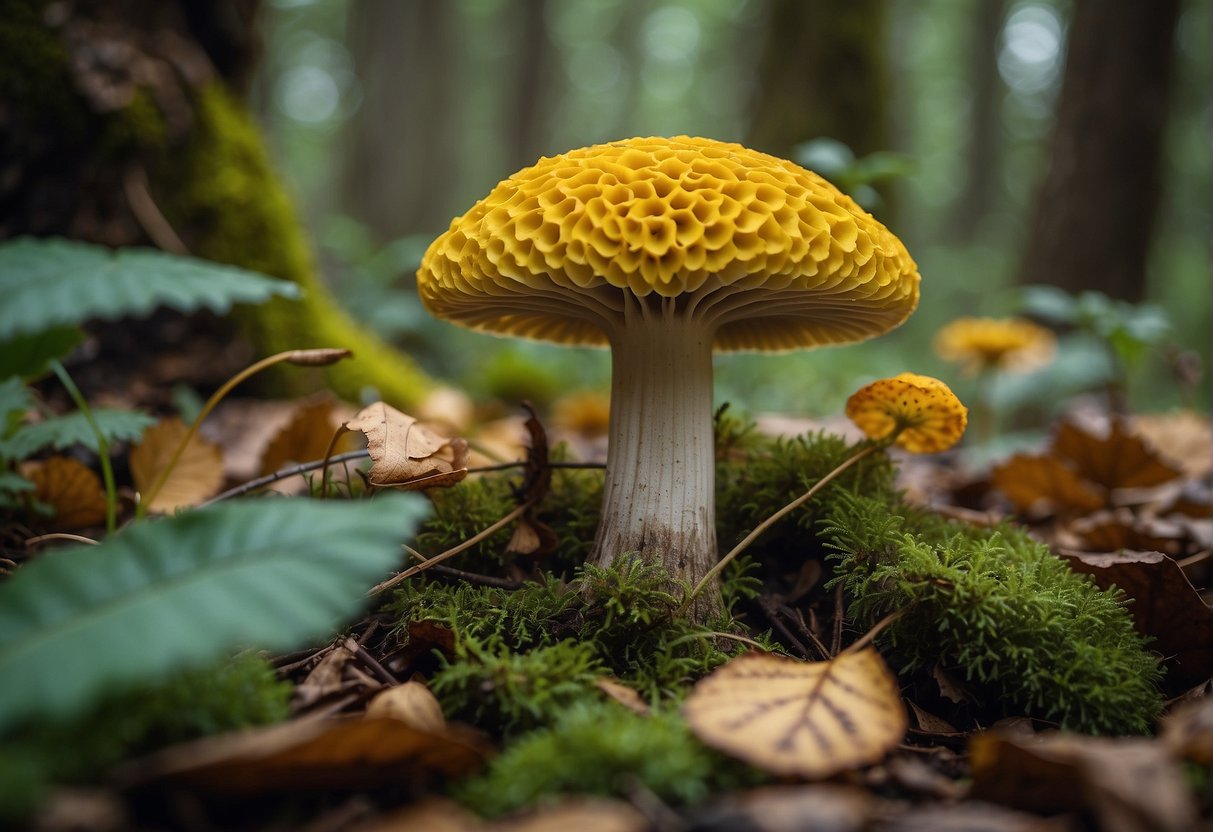
Yellow morels are a treasure you might find in the forests, and their existence is tightly wired into the ecological fabric of their habitat. As a steward of nature, understanding the delicate balance they maintain with their environment is crucial for their conservation and for ensuring that these prized fungi continue to grace our woodlands.
Environmental Impact
Morels, particularly yellow morels, have an intricate relationship with their environment. They thrive in areas that have recently experienced forest fires, as the open canopy allows sunlight to penetrate and warm the forest floor, spurring morel growth. But it’s not just about the aftermath of the fire; morels actually play a critical role in the recovery of burned ecosystems by decomposing the organic material left behind and recycling nutrients back into the soil.
Mycorrhizal relationships, a form of symbiosis between morel species and trees, are fundamental to a healthy forest. These fungi, including your elusive yellow morels, form partnerships with tree roots, exchanging soil nutrients for sugars produced by the plant. This mutual exchange is so integral that it influences the overall fungal ecology and aids in the conservation of both morels and forest ecosystems.
Symbiotic Relationships
Let’s dive into the underground world where these symbiotic relationships flourish. Morel species form a mycorrhizal bond that is as much about mutual survival as it is about sharing the bounty. Trees and morels swap roles between host and guest throughout their life cycles, sharing nutrients and water. This bond increases the survival chances of young trees and helps morels to disperse their spores across the forest floor.
Remember, these fungi are more than foragers’ prizes; they are essential for the ecological balance of the forests. By being conscious of the conservation of their habitats and the impact that human activities can have on fungal ecology, you are contributing to the preservation of morel species and the health of the woods that we, and countless other creatures, rely on.

